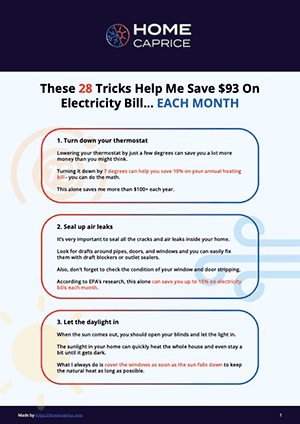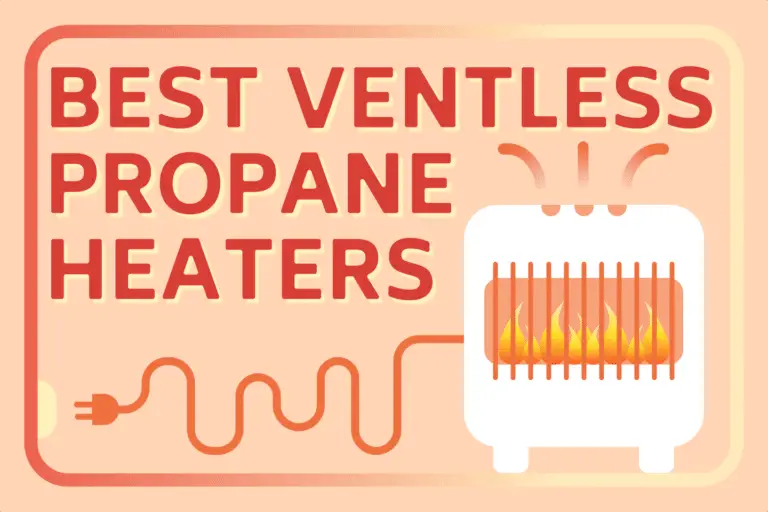So, you want the best home heating options and are torn between a blue flame or radiant heater. Blue flame and radiant heaters vary in their heating methods. Blue flame heaters ignite natural gas to produce a flame that heats the room air.
In contrast, radiant heaters provide direct heat to objects or occupants by producing infrared radiation. Both heater types have different efficiency, comfort, and safety ratings.
We compared their features, heating methods, performance, and maintenance needs to help you make an informed decision.
Blue Flame Heaters at a Glance
Blue flame heaters produce heat by burning a fuel source, such as propane or natural gas, to produce a blue flame. These heaters use convection heating to heat air in a room.
Pros & Cons of Blue Flame Heaters
Pros
Efficient and Even Heat Distribution
Blue flame heaters distribute warmth evenly throughout the room, providing efficient and consistent heating.
Thermostat Control
Most models come equipped with a thermostat, allowing you to set your desired temperature for increased comfort and energy efficiency.
Quick Warm-Up
These heaters have a quick warm-up time, making them suitable for spaces needing immediate heat. The Dyna-Glo 30,000 BTU propane blue flame heater is easy to use for starters and allows you to adjust the heat settings.
Cons
Slower Initial Heat Output
Blue flame heaters rely on combustion before producing heat, which may slow initial heat output.
Safety Concerns
These heaters pose gas leak and malfunction risks. To avoid this, buy heaters with safety features such as tip-over switches and oxygen depletion sensors.
Requires Proper Ventilation
Blue flame heaters burning propane or natural gas release carbon monoxide, which requires proper ventilation to prevent buildup.

Download this FREE cheat sheet to find 28 tricks that can help you save on your electricity and heating bill each month.
Click here to get a FREE Cheat-SheetRadiant Heaters at a Glance
Radiant heaters warm objects and surfaces using infrared radiation.
Pros & Cons of Radiant Heaters
Pros
Instant Heat Delivery
Radiant heaters offer instant warm-up times as they don’t rely on heating the surrounding air before providing warmth.
Directional Heat Transfer
Radiant heaters provide targeted and efficient heating by directly warming up people and objects in their line of sight.
Effective in Uninsulated Spaces
This heater warms people and objects directly without using air circulation. This approach minimizes heat loss.
For sturdiness, value for money, quietness, and efficiency, I’d pick the PELONIS PHO15A2AGW space heater.
Cons
Limited Heating Range
Radiant heaters warm objects in their line of sight, making them less effective for heating larger or enclosed spaces.
Potential for Uneven Heating
Radiant heaters cause uneven heating in larger rooms as they focus warmth on specific areas rather than distributing it uniformly.
Require Clear Line of Sight
These heaters need a clear line of sight to provide targeted heating. Any obstruction will hinder their performance.
Blue Flame vs Radiant Heaters: Performance Comparison
Heating Efficiency
Blue flame heaters are great at heating big spaces evenly. Radiant heaters give focused heat to specific areas or people.
Temperature Control and Distribution
Blue flame heaters have thermostats to control temperature and distribute heat evenly in large areas. Radiant heaters provide targeted warmth for specific needs through adjustable heat settings.
Energy Consumption and Cost Considerations
Blue flame heaters consume more energy in larger spaces. Radiant heaters are more energy-efficient at spot heating, leading to lower operational costs.
Impact on Indoor Air Quality
Blue flame heaters may impact indoor air quality due to combustion byproducts such as carbon monoxide and nitrogen oxides. Radiant heaters have little to no impact on indoor air quality.
Factors Influencing Choice
Room Size and Layout Considerations
Blue flame heaters are best for larger rooms as they distribute heat more evenly than radiant heaters. Radiant heaters work well for smaller, less cluttered rooms. Choose blue flame heaters for a home with an open layout.
Climate and Weather Conditions
Choose radiant heaters if you live in windy or drafty areas. These heaters can still provide targeted heat without relying on air circulation. Blue flame heaters with good convection are great for heating large areas in cold places.
Safety Features
Some blue flame heaters have safety features like tip-over switches and oxygen-depletion sensors. Additionally, a child lock feature comes in handy if you have kids.
Radiant heaters are safe and have fewer safety features. I’d only recommend steering them clear of combustibles.
Installation and Maintenance
Blue Flame vs Radiant Heaters: Installation Method
Consider hiring a professional to install a blue flame heater. They’ll select a well-ventilated area near a gas line, connect the heater, and safely mount it on a wall.
With radiant heaters, choose a suitable location with ample clearance and proper ventilation. Next, mount the heater securely, following manufacturer instructions. Then, connect it to a power source, adhering to electrical safety guidelines.
Common Maintenance Tasks and Schedules
This maintenance schedule is best for blue flame heaters:
- Monthly:
- Check for visible signs of wear or damage
- Inspect the pilot light for consistent ignition.
- Every 3-6 months:
- Clean the burner and orifice to ensure efficient combustion.
- Inspect and, if necessary, replace the thermocouple.
- Verify the condition of the venting system.
- Annually:
- Schedule a professional inspection to check gas pressure, ventilation, and safety features.
- Replace air filters.
- Check for gas leaks and tighten connections.
- Ensure the unit is securely mounted.
Maintain this schedule for radiant heaters:
- Monthly:
- Inspect the heater for visible wear, damage, or loose components.
- Check the reflectors for dust or debris and clean them if necessary.
- Ensure proper ventilation and clearances around the heater.
- Every 3-6 months:
- Clean the heating elements to remove dust and debris, promoting efficient heat radiation.
- Verify and tighten electrical and gas connections.
- Inspect the safety features, such as the flame sensor.
- Annually:
- For safety, schedule an inspection by a professional. Get a pro to check for gas leaks, test safety features, and ensure the heater works safely.
- Replace air filters if applicable to maintain optimal airflow.
- Verify that the ignition system is working correctly.
Tips for DIY Maintenance
Clean the burner and orifices in blue flame heaters every so often. This improves gas flow and ensures combustion efficiency. Inspecting and replacing air filters to maintain optimal air intake is also worth considering.
For radiant heaters, consider dusting and cleaning reflectors to maximize heat output. To make your heater safer, check and tighten electrical and gas connections.
Energy Efficiency and Environmental Impact
Energy Efficiency Ratings for Both Heater Types
Energy efficiency ratings vary among models of radiant and blue flame heaters. Specific ratings, such as the Annual Fuel Utilization Efficiency for gas heaters, may vary.
Electric radiant heaters are generally considered 100% efficient in converting electricity to heat. You can, however, expect gas-powered radiant heaters to have a utilization efficiency rating.
High-efficiency blue flame heaters have energy ratings of 90% or higher. Factors such as size, insulation, and thermostat control affect energy efficiency.
Eco-Friendly Features
Modern heaters have eco-friendly features. They use efficient burners and low-emission technologies.
When choosing blue flame heaters, pick one with cleaner combustion and lower emissions. Electric radiant heaters are eco-friendly because they don’t produce emissions when used.
Final Thoughts: Which Heater Warms Better?
Choosing between a blue flame or radiant heater depends on your needs. Blue flame heaters are best for heating large rooms. They even offer heat distribution and thermostat control. Choose a radiant heater if you need instant heat delivery, quiet operation, and energy efficiency.


Download this FREE cheat sheet to find 28 tricks that can help you save on your electricity and heating bill each month.
Click here to get a FREE Cheat-Sheet


![Best Outdoor Electric Heaters [Buyer’s Guide]](https://homecaprice.com/wp-content/uploads/best-outdoor-electric-heater-768x512.png)

